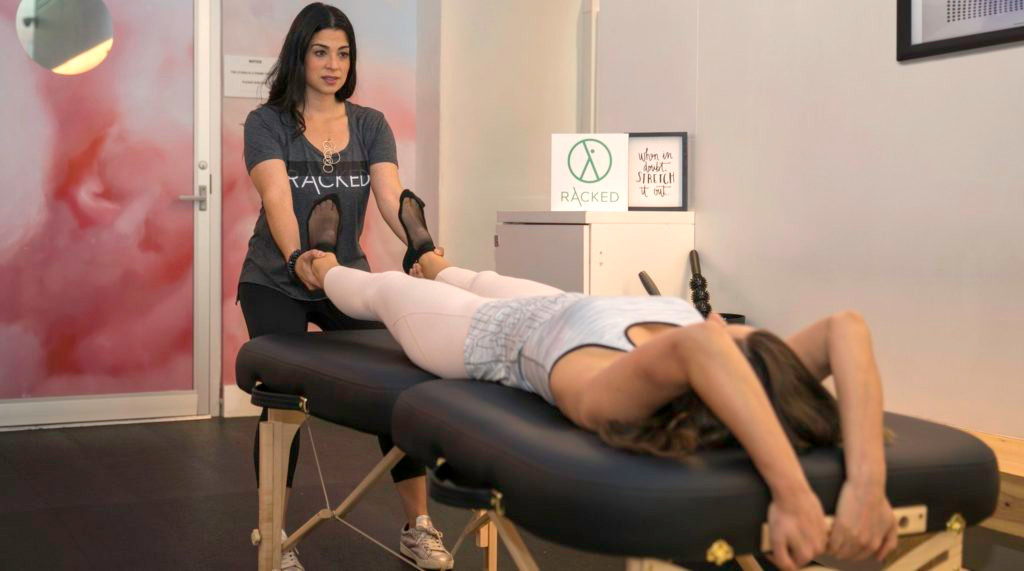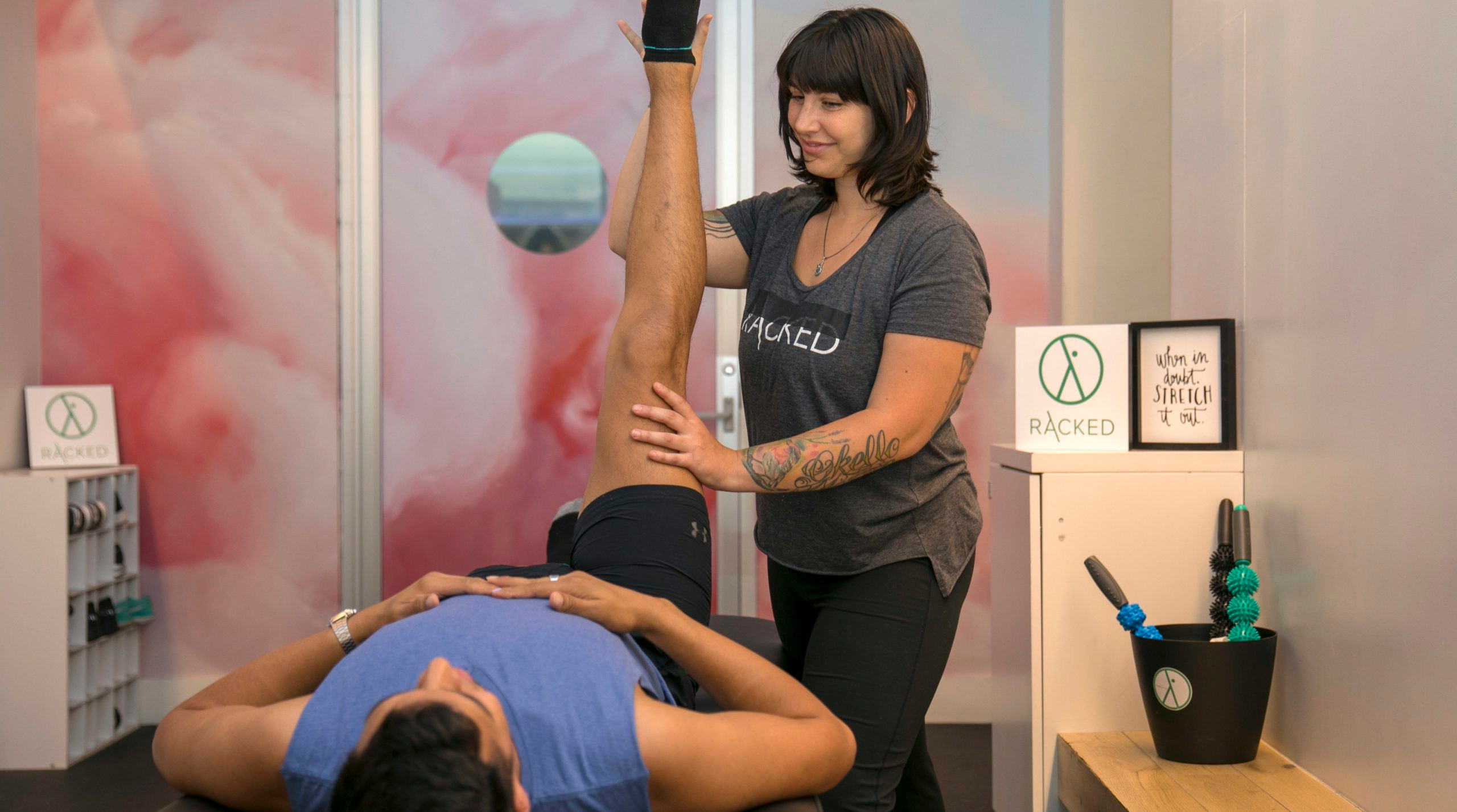What Is Dynamic Stretching? Learn About The Benefits From An Expert
Last Updated Jan 28, 2025


Keren Day, co-founder of stretching studio Racked Stretch, shares her tips for all things stretch and recovery.
You give it your all during your workout. Why not give the same effort to stretching?
Wellhub chatted with Keren Day, a doctor of chiropractic and co-founder of Racked Stretch, a stretching service in New York. Rackedfocuses on dynamic stretching (we’ll get to that in a minute) and tailors its “Stretch Menu” to different activities like running and cycling. The Racked mission is to keep people from neglecting their stretches while juggling their busy schedules.
“This usually happens because we only have so much time, so if we have to choose between the workout or the stretch, we usually pick the workout,” Day said.
We asked Day some common questions about stretching. Here’s what she had to say:
What’s the difference between a static stretch and a dynamic stretch?
Static stretching is what many of us do on our own before or after a workoutwhere we stay in one position and hold that stretch for a certain amount of time. Dynamic stretching is when you stretch a muscle through a range of motion.
What should my pre-workout stretching routine look like?
Day’s go-to tip for a pre-workout stretch is to warm up the body with a quick walk or a light jog and then use a roller stick. A stretch at Racked can help you prepare for your Wellhub class, but if that’s not available, Day said a dynamic stretch with a stretch rope is also helpful.
“This helps promote blood flow and create more agility so your body is ready to work and perform at its peak level,” Day said.

Racked focuses on dynamic stretching, or stretching through a range of motion.
What should I avoid when stretching?
Be mindful of holding a stretch for too long, an issue Day said she often sees in her chiropractic practice. This is why Racked focuses on dynamic stretching rather than static.
“[At Racked,] we don’t give the body enough time to feel ‘pain’ while stretching,” Day said. “Pain will signal the sympathetic nervous system, otherwise known as the ‘fight or flight’ reflex. The body will feel attacked and start to resist, causing the muscles to contract.”
This can pull on the tendons and ligaments and contribute to tendonitis — so next time you start stretching after a sweaty workout, take note of how long you’re holding it.
Do I really need to stretch after my workout?
The simple answer? Yes. Day pointed out that stretching post-workout is generally easier since you are already warmed up and in stretch-friendly clothing.
She did point out, though, that stretching later in the day or week can be just as effective when done correctly, especially since stretching not only aids in post-workout recovery, it can help with proper sleep, posture, and more. The key is to make stretching just another part of your fitness routine.
“It’s important to focus on recovery in general because it will help increase performance and keep you doing the things you love for longer,” Day said.
From the first second of your warm-up to your last cooldown stretch, Wellhub is there to help you reach your fitness goals. If your company offers Wellhub, start your 7-day free trialto check out gyms and studios near you.
Category
Share

The Wellhub Editorial Team empowers HR leaders to support worker wellbeing. Our original research, trend analyses, and helpful how-tos provide the tools they need to improve workforce wellness in today's fast-shifting professional landscape.
Subscribe
Our weekly newsletter is your source of education and inspiration to help you create a corporate wellness program that actually matters.
Subscribe
Our weekly newsletter is your source of education and inspiration to help you create a corporate wellness program that actually matters.
You May Also Like

Women Gym Owners And Founders To Celebrate This International Women’s Day | Wellhub
For International Women’s Day, we put the spotlight on women-owned and founded gyms across the country that deserve a moment to shine.

Black-Owned And Founded Fitness And Wellness Businesses To Support
Check out these black-owned and founded gyms, studios, and fitness and wellness companies and the many ways you can support them.

5 Fun Workouts To Spice Up Your Fitness Routine | Wellhub
Here are five fun workouts and studios to shake up your circuit and keep your fitness routine from falling into an exercise rut.